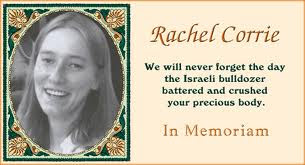Christmas Eve is just two weeks from today, and the popular Christmas carol “O Little Town of Bethlehem” will be sung in many Christian churches that evening. So, this is a fitting time to think about the ongoing plight of the Palestinians in Bethlehem—as well as in Gaza and the entire West Bank.
“O Little Town of Bethlehem” was
written by Phillips Brooks.
In the decades following his ordination as an Episcopal priest in 1860, Brooks
(1835~1893) became whom many considered the greatest preacher of his day. While still a young man, he delivered a eulogy for slain President Lincoln in April 1865.
Later that year, Brooks traveled
across the Atlantic to Europe and then made a pilgrimage to Bethlehem. On
Christmas Eve, he assisted at a service in the Church of the Nativity, built
over the traditional site of Jesus’ birth. Three years later he wrote "O
Little Town of Bethlehem" for the children of his church.*1
In 2015, 150 years after Brooks visited
Bethlehem, I visited
there for the first (and only) time. I took the short taxi ride from the
south side of Jerusalem to the West Bank wall (or “separation barrier”). That
structure, often called the “Wall of Apartheid" by Palestinians, was
completed in 2006.
With my U.S. passport, I was able to pass
through the wall with no problem. After observing what I could there, I then
took another taxi to the main tourist sites in old Bethlehem. I was rather
unimpressed, though, by the Church of the Nativity and the commercialism of the
surrounding environment.*2
I soon decided to go to the central shopping area of the city where I walked up and down the streets, observing ordinary
Palestinians going about their daily activities. I quickly noticed the
considerable difference between them and the Israelis I had seen in Tel Aviv
and Jerusalem.
Despite their close geographical proximity,
they seemed to be living in a different, much earlier, time period. And most of
them were not free to exit Bethlehem and travel to Jerusalem. They were mostly prisoners
confined to their own “little town” of fewer than 30,000 people.
That and my experiences the next day
traveling in East Jerusalem and the West Bank territories sparked the drafting of
“The Plight of the Palestinians,” my 6/30/15 blog post, which I encourage you
to read (again) by clicking here.
The plight of the Palestinians is far,
far worse today than it
was in 2015. That is true for the West Bank, but extremely, and increasingly,
worse for Gaza now, 430 days after Hamas’s attack on Israel on October 7, 2023.
It is also bad again this year in
Bethlehem. A recent article posted by Reuters is headlined, “Another bleak
Christmas in Bethlehem….” The article includes an image (similar to the one
above) of the creche created last year by the Lutheran Church in Bethlehem to
depict the sickening rubble in Gaza.
And now, the situation there is so
much worse. Just last week, Amnesty International concluded that Israel has committed and is
continuing to commit genocide against Palestinians in the occupied Gaza Strip.
Sadly, in the coming year, things may get even worse for both Gaza and the West
Bank.
President-elect Trump has named Mike
Huckabee as his choice for the U.S. ambassador to Israel. Last month, a
Religious Dispatches post (see here), stated that Huckabee is a stalwart
Christian Zionist who has made over 100 trips to Israel.
According to that article, “Huckabee
has aligned consistently with the hawkish Israeli Right and its agenda of
permanent occupation, expansion, and Jewish supremacy in Palestine.”
The first verse of Brooks’s carol
ends, “The hopes and fears of all the years are met in you tonight.” In
Bethlehem now, the fears of most people are undoubtedly stronger than their
hopes—and around the world, many of us grieve the ongoing slaughter of the
Palestinians in the West Bank and Gaza.
Then, the last verse concludes with the words “peace
to all on earth,” which the angels sang on that first Christmas.*3
May God help us all to strive more diligently to make peace to all a reality in
Bethlehem, Gaza, and everywhere across the globe!
_____
*1 Click here if you would like to hear the carol being nicely sung. Also, here is a link to an informative piece, including several images, about Brooks written by the New England Historical Society.
*2 A short time after his mother Helena visited Jerusalem and Bethlehem in 325–326 A.D., Constantine commissioned the construction of a church on the site traditionally considered the birthplace of Jesus.
*3 The wording of the original carol was updated in The New Century Hymnal (1995), cited above.
Note: “To Bethlehem” is a powerful new poem that begins “O little Town of Bethlehem / forgive us for the lie / our churches tell - that all is well / as Christmas Eve draws nigh.” I encourage you to read the entire poem by clicking here.






.jpg)